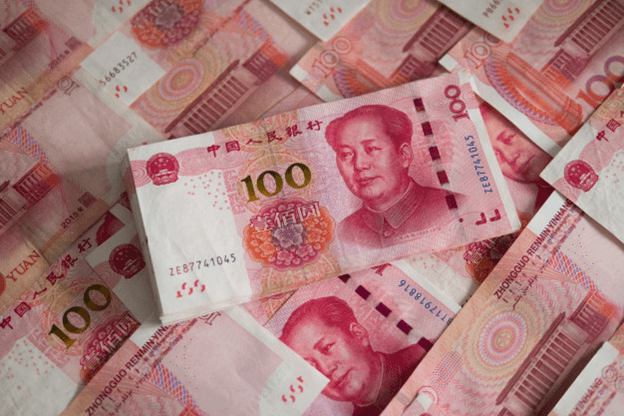
U.S. dollar plunged into the red. Chinese Yuan is soaring
The U.S. dollar continued falling on Monday as risk appetite across markets tentatively increased. Encouraging economic data, along with bets that the U.S. Federal Reserve will tighten policy at a slower pace, supported such sentiment. As a result, the dollar index is set on track for its first monthly decrease in five. The safe-haven currency is rapidly losing steam after a breakneck start to the year.
The dollar index may lose more than 1.5% in May. Despite that, it remains up by approximately 6% on the year. The greenback traded lower by 0.2% on the day at 101.510 at last. Trade was light through Monday as U.S. bond and stock markets closed for the Memorial Day public holiday.
On Friday, new data showed that U.S. consumer spending increased by more than expected in April as households bolstered purchases of goods and services. In addition, the surge in inflation slowed. According to analysts, the encouraging data, coupled with bets on a more cautious tightening path by the Fed officials, weighed on the dollar.
Meanwhile, world share markets rallied on Monday as easing coronavirus restrictions, and new stimulus in China helped sustain last week’s recovery. Consequently, the offshore-traded Chinese yuan firmed as much as 1% versus the greenback on the reopening news. The yuan exchanged hands higher by 0.6% at 6.6802 yuan per dollar at last.
New data will determine the FX market’s course
Currency analysts at MUFG stated that how the U.S. consumer plays out from here and how the Chinese economy performs will be crucial determinants for broader risk appetite in the FX market. Investors are waiting for various economic data that are due this week, including Chinese Purchasing Managers’ Index figures and U.S. jobs numbers. They could give clues on the outlook for global growth.
On Monday, inflation data from Germany and Spain showed price hikes accelerated in May, pushed up by rallying energy prices. The eurozone inflation figures are due on Tuesday, as well. Thus far, the inflation numbers have helped keep a lid on the common currency’s gains. Still, the Euro managed to climb up by 0.2% to $1.07600 today after skyrocketing to a monthly high of $1.07810 earlier. The Sterling also added 0.1% to $1.26350. On the other hand, the safe-haven yen plummeted by 0.4% to 127.605 yen per dollar.
In Asia, most EM stocks and currencies soared on Monday. Shanghai authorities announced stimulus measures to support the economy, boosting the risk appetite. A subdued greenback also aided gains. Over the weekend, China inched toward ending a two-month Covid-19 lockdown in Shanghai. City officials introduced an action to revive the country’s commercial hub. That helped MSCI’s broadest index of Asia-Pacific shares outside Japan, which gained 2.2% to hit its highest level in more than three weeks.
Traders will be relieved in the short term by the news of the Shanghai stimulus, but there is still a level of uncertainty as to how much relaxation the government will embrace – noted Wei Liang Chang, macro strategist at DBS Bank. He also added that investors still need more details regarding the steps that the authorities are taking, whether through extending fiscal stimulus or through monetary easing.
How are the EM currencies trading now?
The Indonesian rupiah and the Malaysian ringgit jumped by 0.2% on Monday. Meanwhile, the Singaporean dollar also gained 0.2% against the greenback. The dollar’s decline supported broad gains among emerging Asian currencies.
Taiwan’s dollar added 0.8%, while the South Korean won soared by 1.3%. It was set for its best session since March 17. South Korea and Taiwan led the moves in regional equity markets. Their stock indexes surged by 1.2% and 2.1%, respectively. However, energy export-oriented Malaysia and Indonesia stocks bucked the broader trend, shaving off 0.7% and 0.3%, respectively. Malaysian palm oil futures declined amid uncertainties around the resumption of Indonesian exports.
Forex market participants will likely focus on China’s official Purchasing Managers’ Index figures for May for new clues on economic conditions in the second-largest economy worldwide.
Jeffrey Halley, the senior market analyst at OANDA, noted that this data would have a very binary impact if peak-COVID is here. Soft data might ramp up fears of a slowdown, while a decent showing will likely see hot money flowing in looking for the bottom.


